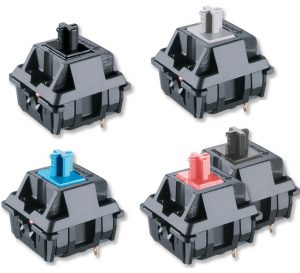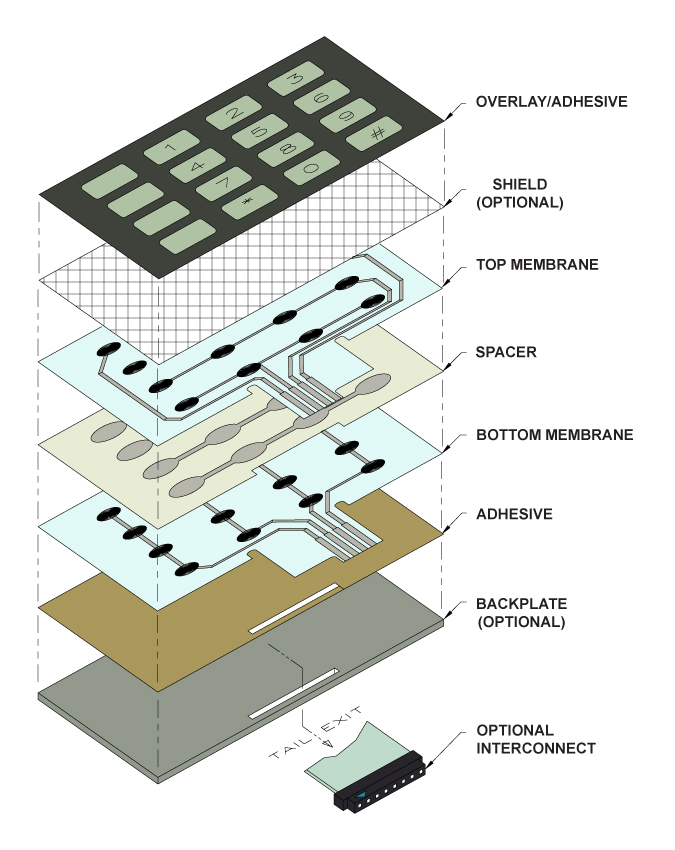Check Out Various Kinds Of Membrane Switch Technologies for Your Requirements
Check Out Various Kinds Of Membrane Switch Technologies for Your Requirements
Blog Article
Understanding the Capability of Membrane Layer Switches for Customer Interface Gadget
The functionality of membrane layer changes represents a substantial improvement in individual interface design, incorporating effectiveness with aesthetic adaptability. These switches run via a multi-layered structure that converts user communications into electric signals, enabling for both portable layouts and resilience versus environmental aspects. As industries significantly prioritize customer experience, understanding the subtleties of membrane button technology ends up being important. What effects do these developments hold for future applications, and just how might they redefine user communications across different tools?
What Are Membrane Layer Switches?
Membrane switches are ingenious user interface tools that promote user interaction with electronic equipment. These versatile components contain numerous layers, consisting of a visuals overlay, spacer, and a published circuit layer. The style enables a seamless integration into various electronic devices, boosting both the aesthetic and useful facets of interface.
Membrane layer switches are typically utilized in a vast array of applications, from home home appliances to industrial machinery and clinical devices. Their construction generally features a thin account, making them an ideal selection for portable styles. The tactile feedback given by these buttons can be engineered to meet specific customer choices, guaranteeing effective interaction between the user and the tool.
Toughness is one more considerable advantage of membrane layer buttons, as they are resistant to dust, dampness, and chemicals, which improves their lifespan in requiring atmospheres. Furthermore, these switches can be customized in regards to shape, size, and visuals style, permitting branding and user-specific features. Overall, membrane switches over stand for a useful remedy for enhancing individual experience in digital devices, combining capability with aesthetic allure in an effective fashion.
Exactly How Membrane Layer Changes Job
Operating on a simple principle, membrane layer switches over utilize a split construction to register individual input effectively. Each button includes several layers, including a printed circuit layer, a spacer layer, and a leading graphic layer, which are created to function with each other perfectly. When an individual presses the top layer, it presses the spacer layer, bringing the conductive components of the circuit layer into call with each other.
This call develops a closed circuit, signifying the tool to implement a particular function. The layout permits various configurations, including responsive comments, which can boost the customer experience by offering a physical feeling upon activation. The products made use of in membrane buttons commonly consist of adaptable substratums, such as polyester or polycarbonate, which make sure resilience and durability against deterioration.

Key Benefits of Membrane Switches

One more significant benefit is their density. Membrane buttons are thin and lightweight, which makes it possible for suppliers to conserve area in their devices without sacrificing capability. This attribute is specifically valuable in applications where weight and quantity are vital considerations.
Additionally, membrane switches are resistant to dust, dampness, and chemicals, improving their longevity. This durability prolongs their life-span and decreases the requirement for constant replacements, causing cost financial savings in time.
In addition, the tactile comments provided by membrane buttons can be optimized to improve individual communication. They can include features such as raised switches or distinct clicks, improving functionality and customer experience.
Applications Across Industries
Customer interface devices making use of the original source membrane switches are prevalent in a wide range of sectors, showcasing their adaptability and performance. Membrane Switch. In the clinical field, membrane switches are important to devices such as diagnostic devices and client tracking systems, where their durability and simplicity of cleansing are vital for keeping health criteria. In the automotive industry, these switches are employed in dashboard controls and infotainment systems, offering a streamlined and modern-day user interface for users.
Additionally, the customer electronic devices market take advantage of membrane layer buttons in devices and portable tools, where portable layout and easy to use interfaces enhance user experience. Industrial applications also leverage membrane switches over for control board in equipment and automation systems, highlighting their robustness and resistance to severe atmospheres.
In the aerospace and defense industries, membrane buttons are used in cockpit controls and equipment, where reliability and efficiency under extreme conditions are extremely important. In addition, the video gaming market progressively incorporates membrane layer buttons in controllers and gallery equipments, adding to an appealing individual experience. Generally, the convenience of membrane anchor layer switches over allows their widespread usage throughout various fields, underscoring their relevance in contemporary interface style.
Future Trends in Membrane Layer Switch Over Technology

In addition, using innovative products, such as polycarbonate and polyester films, is expected to increase, informative post supplying enhanced toughness and resistance to environmental stressors. These products add to the general durability of membrane layer switches, making them appropriate for harsher industrial applications.
In addition, the unification of smart technology, including IoT connection, will enable membrane switches to communicate with other devices and systems, promoting a much more interactive user experience. This trend aligns with the expanding need for wise devices across different industries, from healthcare to consumer electronic devices.
Last but not least, customization options are expected to increase, enabling makers to develop bespoke solutions customized to details user requirements and choices. These advancements will certainly place membrane buttons as essential elements in the development of customer interface technology.
Verdict
In conclusion, membrane layer switches over represent a crucial improvement in customer interface innovation, providing a trusted and flexible option for diverse electronic applications. As advancements in material science and touch picking up technologies continue, the functionality and applicability of membrane layer switches are anticipated to expand, enhancing their significance in modern digital gadgets.
Report this page